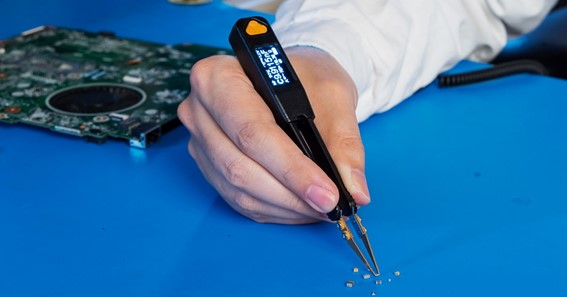LCR meters are frequently used to measure components’ inductance, capacitance, and resistance. For use in development laboratories that test and measure the actual performance of specific parts, these inspection tools ensure the components are not faulty. The letters L, C, and R stand for inductance, capacitance, and resistance, respectively.
LCR meters come in a variety of types, ranging from simple versions that give indications of impedance only by converting the value to inductance or capacitance. Inductance and capacitance can be measured by sophisticated LCR meters. They can also measure the equivalent series resistance of capacitors and the Q factor of inductive components.
There are 2 types of circuit techniques that are used to use an LCR meter accurately.
Bridge method: The bridge method is based on the concept of Wheatstone bridges, where the goal is to achieve a situation where the bridge is balanced and there is no current flowing through the meter. To determine the value of the component under test, the bridge positions found at the balance points are used. Low frequency measurements are usually carried out with this method – i.e., within a range of up to 100 kHz.
The bridge method involves placing the DUT or device under test into a bridge circuit, and determining its value from the settings for the other elements in the bridge. LCR meters using this method are known as LCR bridges.
Current-voltage measurement: Generally, components used in higher frequency applications are measured by the current-voltage method. For high frequency measurements and over wide ranges of values, the method is highly accurate. This technique, also called RF I-V measurement, utilises voltage and current measurements. Due to the high frequency, the measurement circuit is impedance matched. In some cases of high precision and very high frequency measurements, a precision coaxial test port may also be utilised.
Click here – What are the most profitable startup ideas in the manufacturing sector
To In order to obtain accurate measurements from an LCR meter or an LCR bridge, make sure you do the following:
The lead length: Make sure that the lead length starts to impact at frequencies above 1 MHz. The average estimate for lead inductance is about 10 nH/cm of lead. Keep the lead lengths as short as possible for optimum results.
Operational frequency: It is recommended to use a test frequency as close to the actual operating frequency while taking measurements with an LCR meter. This will make sure that any stray effects or changes due to frequency are minimal. For example, there may be differences in the properties of inductor cores at different frequencies, which can produce noticeable differences in some cases.
Always measure as close to the test amplitude: This is because the component values may vary according to the signals applied. For example, inductors that use cores such as ferrite may introduce losses; this may be amplitude dependent.
Discharge capacitors before measurement: Since some capacitors might retain a residual charge when tested in certain conditions, it is best to discharge them prior to taking new measurements.
To find a wide range of LCR meters at a reasonable price or to place a bulk order, visit RS Components.
Click here – What Is the Full Form of BPSC? How Many Stages Are There for the Exam?
To Know Some Great Stuff Do Visit FindProsCons
To Know Some Great Stuff Do Visit Flagizzy
To Know Some Great Stuff Do Visit GetDailyBuzz
